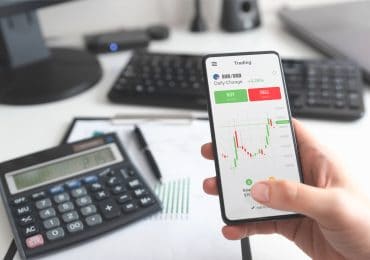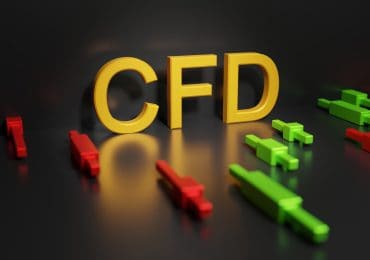Contracts for difference (CFDs) let you trade on price movements of various assets like stocks, currencies, commodities, and indices without owning the underlying asset. Combine this versatility with the ability to utilize leverage and it’s what makes the CFD market an attractive choice for many traders. According to statistics, 100,000 Aussies completed at least one CFD or forex trade in 2021 compared to 75,000 in 2018. This rise in number shows how popular this instrument has become. (1)

However, it’s essential to understand the high risk involved before you start. This is as crucial as approaching trading with a clear strategy and sound risk management practices. That’s why this guide will provide a foundation for CFD trading suitable for beginners. Want to set foot in this endeavor but don’t know where to start? Read on for some valuable tips:
Grasping the Basics
CFD has already become quite a commonplace term in the investment market. But what are CFDs? Essentially, they’re financial instruments that allow traders to speculate on the price movements of asset classes without actually owning them. You make an agreement with a broker to exchange the difference between the opening and closing price of an asset. If you correctly predict the price direction, you profit; if your prediction is wrong, you incur a loss.
The core mechanism of CFD trading is simple. When you open a position, you agree to exchange the difference between the opening and closing price of a particular asset’s CFD. You choose whether to take a long CFD position when the price rises or a short position when you believe the price will fall.
Key terms like margin and leveraged trading are crucial to know. In addition to that, selecting a reputable and regulated CFD broker is also vital if you want to secure your funds. They should offer the financial instruments you’re interested in trading. Not just that, but they should also provide educational resources and have responsive customer support. They should also have a top security system that will protect your assets and information against any form of cybercrime. Therefore, take the time to compare different brokers before committing to one.
Develop a Trading Plan
Trading without a plan is like setting sail without a destination. Define the financial goals you want to achieve and assess how much risk you’re comfortable taking. For example, do you want to make money in the short term like day traders by speculating on volatile markets or hold a long-term position and benefit from a more stable market?
Your trading goals should outline your preferred time frames, entry and exit points for trades, how you’ll employ stop-loss orders to limit downside risk, and when you’ll consider taking profits. The result? A well-defined trading strategy that helps prevent impulsive decisions driven by emotions like greed or fear, which can be a real detriment to your CFD trading strategy.

Master Technical Analysis
Technical analysis involves studying price charts to identify patterns and trends. Nothing gets more in-depth than this form of analysis, and it can take more time to master and implement it. But while it’s difficult to perform, it forms the backbone of market trends, with about 89% of day traders using it as part of their strategy. (2)
Start by learning about popular indicators like moving averages and Relative Strength Index (RSI), as well as how to identify support and resistance levels. As you gain more experience, you’ll be more confident combining these indicators so you can generate stronger trading signals.
Note that technical indicators are tools. They’re not crystal balls. They serve as your guide while creating your CFD strategies. Don’t treat them as the absolute truth, as the market can easily move against you. Practice interpreting chart patterns and indicators with your broader market understanding for better position trading decisions.
Know the Fundamental Analysis
Now, let’s discuss fundamental analysis. This trading strategy is based on current events including economic news, political events, and interest rate decisions. See, these elements can impact the CFD market, most times leading to a high price change of assets. So, the best thing to do is to stay updated with economic calendars and become familiar with key data releases, such as unemployment figures or central bank announcements.
To add, earnings reports, product launches, and other company-specific news can influence the price of stock market.
Combining fundamental awareness with technical analysis gives you a more holistic view of the markets. This allows you to make informed decisions rather than just blindly following chart patterns.
Practice and Risk Management
The best way to gain confidence in CFD trading is through practice. Most brokers offer a free demo account where you can trade with virtual money in a simulated environment, which mimics market movements in a live account. This is a good place to start. Use these demo accounts extensively to test trading strategies and familiarize yourself with order types.
Always implement risk-management tools, especially stop-loss orders. These automatically close your trade if a certain loss threshold is reached. When setting them up, there are several tactics you can use to reduce their risk exposure.
Most CFD traders always use the 6% trailing stops as a universal rule while setting it based on the pattern or security. But generally, the goal is to avoid incurring too much losses that may affect your trading account balance. (3)
Conclusion
CFD trading can be exciting and potentially rewarding if approached with the right mindset and strategies. To be a successful CFD trader, you need to know that it involves risk, and success depends on continuous learning, discipline, and sound risk management practices. Start small, refine your strategies, and seek additional educational resources to build successful CFD trading strategies.
References
- What Is CFD Trading And How Does It Work? https://www.forbes.com/advisor/au/investing/what-is-cfd-trading-and-how-does-it-work/#:~:text=Despite%20the%20risky,back%20in%202018
- Must-Know Day Trading Statistics [Recent Analysis]: https://gitnux.org/day-trading-statistics/#:~:text=Tips%20and%20strategies,improve%20their%20skills.
- Determining Where to Set Your Stop-Loss: https://www.investopedia.com/ask/answers/030915/how-do-i-determine-where-set-my-stop-loss.asp#:~:text=2-,Determining%20Stop%2DLoss%20Order,security%2D%20or%20pattern%2Dspecific%20placements%20including%20average%20true%20range%20percentage%20stops.,-Stop%2DLoss%20Placement